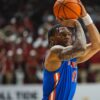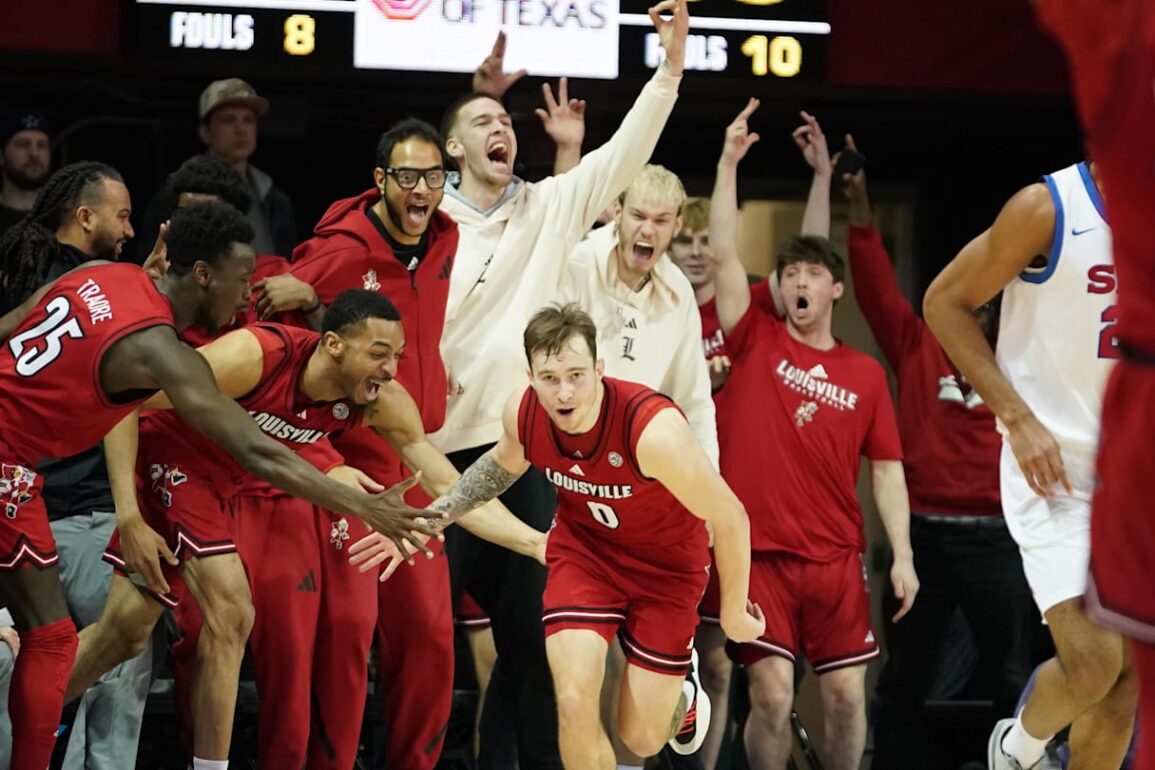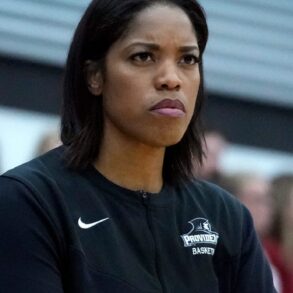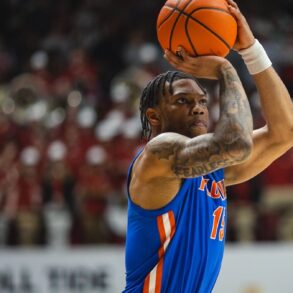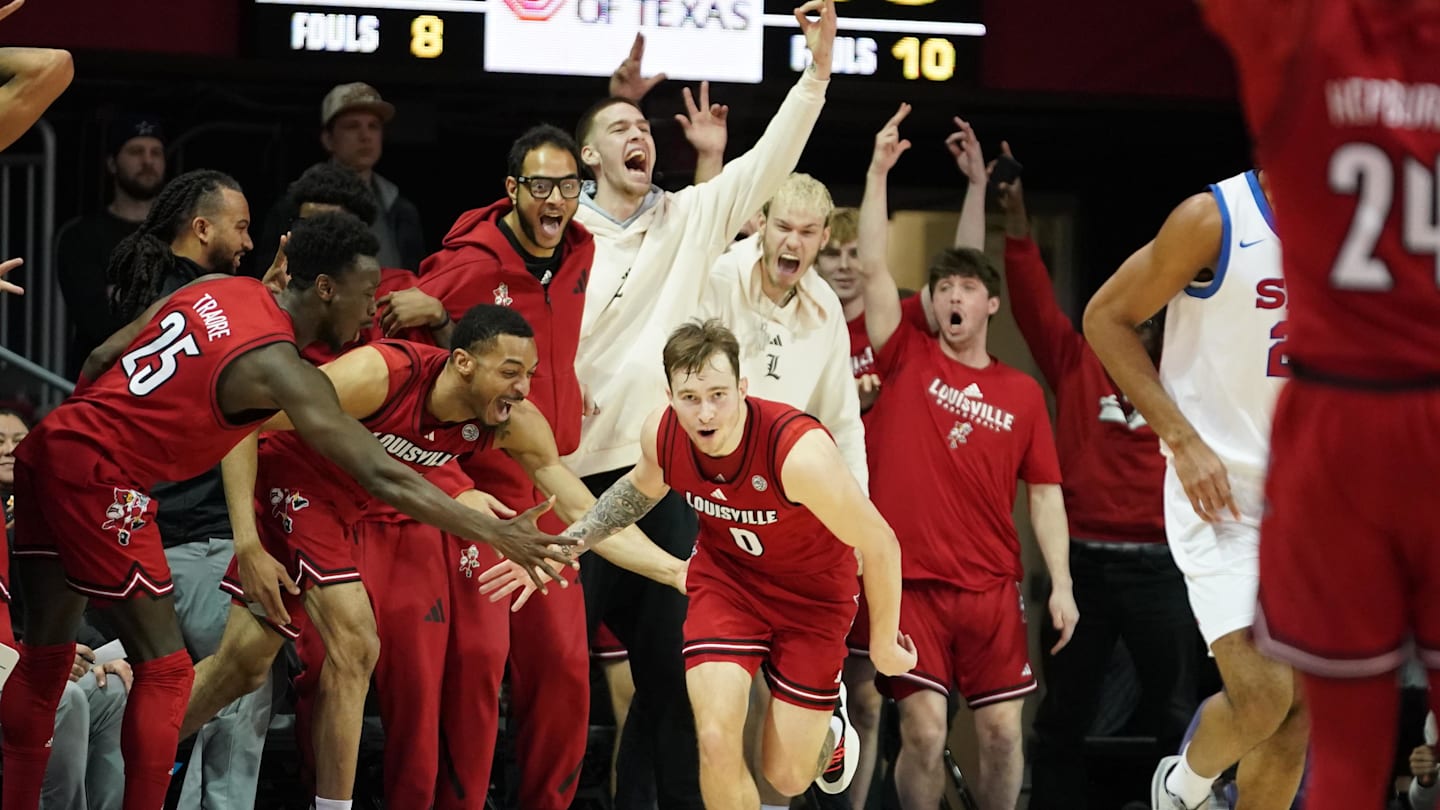
LOUISVILLE, Ky. – Not too long ago, the Louisville men’s basketball program was in little bit of a rough spot. And I’m not talking about the much-maligned Kenny Payne era.
Before coaching a single game for the Cardinals, head coach coach Pat Kelsey had been drumming up some serious hype after his hiring last March. In less than two months, the former Charleston head man and his staff had completely flipped the roster, and was bringing in the No. 1 transfer portal class in college hoops (per On3). There was hope for a bounce back season after Payne had guided them to a paltry 12-52 record in two years.
However, Kelsey’s first year at the helm had less than an ideal start. 11 games into the 2024-25 season, Louisville stood at just 6-5 overall. This included blowout losses to Tennessee and Ole Miss, and yet another loss to Kentucky. Add in the fact that Kasean Pryor and Koren Johnson were lost to season-ending injuries, and the hope for a dramatic turnaround was starting to dwindle.
However, that’s exactly what has happened.
Just over five weeks since that barely .500 start, the Cardinals have exploded. After starting 6-5, Louisville has since fired off nine consecutive wins. Many of these wins, such as against SMU and Virginia (twice), have been blowouts, while a couple, such as against North Carolina, Clemson and Pitt, have been over NCAA Tournament teams.
Speaking of which, because of this, Louisville has gone from on the wrong side of the tournament bubble to a lock to make the Big Dance. As of Jan. 21, Louisville averages out to a six seed according to BracketMatrix.
But what exactly has powered this nearly double-digit winning streak for the Cards? Let’s dive into the numbers.
On the defensive end of the court, Louisville hasn’t been too terribly different than what they were to start. According to BartTorvik, UofL’s adjusted defensive efficiency was 96.9 (51st in D1) during their first 11 games of the season, and has been 96.4 (47th in D1) during their nine-game winning streak.
That being said, what has powered their meteoric surge as of late has been a night-and-day difference on the other side of the court.
During their first 11 games, Louisville’s adjusted offensive efficiency stood at 112.2, or 75th in all of D1 hoops. However, during their winning streak, that number has risen all the way up to 125.9 – or ninth in college basketball.
In fact, when you combine their offensive and defensive efficiencies, since starting their winning streak, Louisville has been the No. 13 team in college basketball. For the season as a whole, the Cardinals have cracked the top-25 even with the slow start, and are the No. 21 team per BartTorvik.
But what has been the key to the offensive turnaround?
It doesn’t matter what offensive philosophy a head coach has or what their pace is, at the end of the day, basketball is all about making shots. Well, that’s something Louisville struggled to do over the first month-plus.
Despite bringing in a roster that, on paper excelled at making three-point shots and shooting overall, for whatever reason, shots simply were not falling anywhere on the court. Over the first 11 games, Louisville shot just 28.0 percent on three-point tries (as well as 42.7 percent from the field overall) and only 70.7 percent on free throw attempts.
But during their winning streak, the Cardinals have been much, much better from beyond the arc and at the charity stripe. Louisville has connected on 36.6 percent of their three pointers over the last 11 games, which has boosted their field goal shooting percentage to 45.2 during that span, as well as 78.1 percent of their free throws.
Recently, the Cardinals have been darn near automatic from both areas of the floor. In the last four games, Louisville has shot a blazing 50-of-128 (39.1 percent) on threes, and over the last six games, they have shot 87-of-106 (82.1 percent) on free throw tries.
Not only has Louisville gotten much better in the shooting department, they have also made strides on the backboards.
It’s no secret that Louisville was a little inconsistent early in the season when it came to securing rebounds on either end of the floor. While part of this was because of a physical non-conference slate, they averaged 36.3 rebounds per games while allowing the opposition to bring down 30.9 per game over their first 11 games – producing an rebounding margin of 5.4.
Following their first month-plus, Kelsey mentioned that working on rebounding and boxing out during practice became a focal point for the team – and it has showed. During their winning streak, while Louisville is averaging slightly fewer boards at 35.7 per game, they’re allowing just 28.1 per game to their opponent, which produces a rebound margin of 7.6 during that span.
Mostly, they have gotten a lot better on the defensive end of the court with rebounding. Over the first 11 games, their defensive rebounding percentage, per BartTorvik, was 28.8 percent – which ranked just 141st in D1. While that same percentage has been 23.5 during their wining streak, it actually ranks 25th in D1.
While there hasn’t been a huge difference in how Louisville has performed defensively then vs. now (which is a great sign in terms of team culture), there are two areas where they have improved.
When it comes to field goal percentage, Louisville’s defense has gotten better in that regard. They were allowing teams to shoot 44.4 percent overall and 35.5 percent on three-point attempts over their first nine games, but during their winning streak those numbers have gone down to 42.7 and 34.2 percent, respectively. Over the last seven games, it’s been 41.0 and 32.5 percent, respectively.
But perhaps most importantly, Louisville has gotten much better at not fouling, thus decreasing the amount of opportunities for opponents to go to the free throw line.
Over the first 11 games, Louisville was averaging 17.0 fouls per game, which in turn allowed opponents an average of 17.9 free throw tries per game. According to BartTorvik, their defensive free throw rate of 31.4 was 133rd in D1.
During their winning streak, the Cardinals have cut down their fouling to 14.9 per game, and limited their opponents to 14.3 free throw attempts per game. This has produced a defensive free throw rate of 24.6 during their that span, which is 28th in college basketball.
This is partially a product of simply making more shots, but it still bares mentioning.
During their first 11 games, Louisville assisted on 143 of their 286 made field goals, which comes out to an assist rate of an even 50.0 percent. During their winning streak, the Cardinals have posted 141 assists on 247 made basket, which comes out to a 57.1 assist rate.
Again, from the jump, Louisville has demonstrated great ball movement, and the players have seldom played hero ball this season. It’s just great to see that finally pan out statistically.
(Photo of Reyne Smith: Raymond Carlin III – Imagn Images)
You can follow Louisville Cardinals On SI for future coverage by liking us on Facebook, Twitter/X and Instagram:
Facebook – @LouisvilleOnSI
Twitter/X – @LouisvilleOnSI
Instagram – @louisvilleonsi
You can also follow Deputy Editor Matthew McGavic at @Matt_McGavic on Twitter/X and @mattmcgavic.bsky.social on Bluesky
This post was originally published on this site be sure to check out more of their content.




